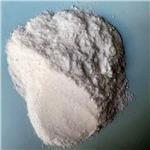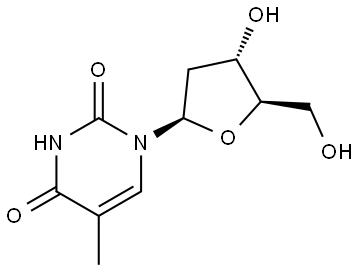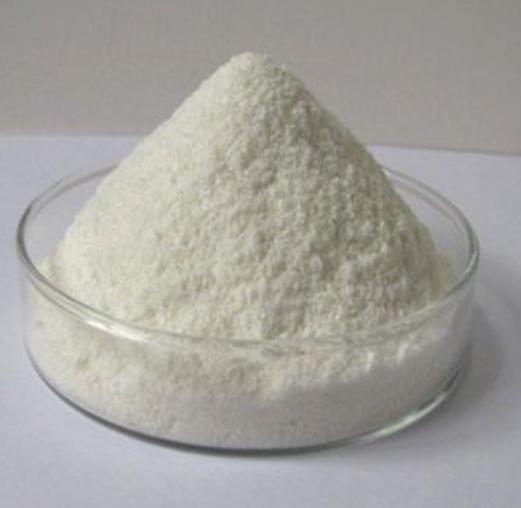Thymidine: A Key Nucleoside in DNA Structure and Function
Introduction
Thymidine, also known as deoxythymidine, is one of the four nucleosides that constitute DNA. Its unique structure and properties make it indispensable in the formation and stabilization of the DNA double helix. Thymidine consists of the pyrimidine base thymine attached to a deoxyribose sugar, which distinguishes it from other nucleosides like adenosine, guanosine, and cytidine. As an integral part of DNA, thymidine is crucial for genetic replication, repair, and transcription processes.

Figure 1 Characteristics of Thymidine
Properties of Thymidine
Thymidine is characterized by several distinct chemical and physical properties. It is a white, crystalline powder soluble in water and slightly soluble in alcohol. Its molecular formula is C10H14N2O5, with a molecular weight of 242.23 g/mol. Thymidine has a melting point of 185-189°C, which is relatively high, indicating strong intermolecular interactions.
The nucleoside is relatively stable under normal conditions but can degrade when exposed to acidic or basic environments. Its stability is also compromised at elevated temperatures and under oxidative conditions. These properties necessitate careful handling and storage to maintain their integrity.
Major Components
The structure of thymidine comprises two major components: thymine and deoxyribose. Thymine, a pyrimidine base, is a planar, aromatic compound with the molecular formula C5H6N2O2. It pairs with adenine in the DNA double helix through two hydrogen bonds, ensuring the accurate replication and transcription of genetic information.
Deoxyribose, a five-carbon sugar, forms the backbone of the nucleoside. It is a deoxy sugar, meaning it lacks one oxygen atom compared to ribose, which is found in RNA. The combination of thymine and deoxyribose forms thymidine, linking through a glycosidic bond between the nitrogen atom of thymine and the first carbon of deoxyribose.
Applications of Thymidine
Thymidine has a wide range of applications in various scientific and medical fields. Its primary role is in the synthesis and repair of DNA, making it essential for cellular replication and genetic fidelity. This nucleoside is extensively used in molecular biology research, particularly in studies involving DNA synthesis, sequencing, and PCR (polymerase chain reaction).
In addition to its research applications, thymidine is utilized in clinical settings. It is a key component in antiviral therapies, particularly for the treatment of HIV/AIDS. Thymidine analogs, such as zidovudine (AZT), are used as antiretroviral drugs to inhibit the replication of HIV by incorporating viral DNA and terminating chain elongation.
Moreover, thymidine is employed in cancer research and treatment. It serves as a marker in cell proliferation assays, allowing researchers to measure the rate of DNA synthesis in tumor cells. This application is crucial for understanding cancer cell growth and developing targeted therapies.
Storage Methods
Proper storage of thymidine is essential to preserve its stability and efficacy. Thymidine should be stored in a tightly sealed container, protected from light and moisture. The recommended storage temperature is between 2-8°C, typically in a refrigerator. Under these conditions, thymidine remains stable for an extended period.
For long-term storage, thymidine can be kept at -20°C or lower. It is important to avoid repeated freeze-thaw cycles, as they can degrade the nucleoside. When handling thymidine, it is advisable to work quickly and efficiently to minimize its exposure to ambient conditions.
Additionally, thymidine should be stored away from strong acids, bases, and oxidizing agents, which can catalyze its degradation. Using desiccants in storage containers can help maintain a dry environment, further enhancing its stability.
Conclusion
Thymidine is a vital nucleoside with significant roles in DNA structure, function, and synthesis. Its unique properties and components make it indispensable in various scientific and medical applications. Proper storage and handling are crucial to maintain its stability and ensure its effectiveness in research and clinical settings. As our understanding of thymidine continues to evolve, it remains a cornerstone of molecular biology and genetic research, contributing to advancements in medicine and biotechnology.
![Article illustration]() References
References
[1] Topolcan O, Holubec Jr L. The role of thymidine kinase in cancer diseases[J]. Expert opinion on medical diagnostics, 2008, 2(2): 129-141.
[2] Martin D S, Stolfi R L, Sawyer R C, et al. An overview of thymidine[J]. Cancer, 1980, 45(S5): 1117-1128.
);See also
Lastest Price from Thymidine manufacturers

US $9.00/KG2024-09-19
- CAS:
- 50-89-5
- Min. Order:
- 1KG
- Purity:
- 99.9
- Supply Ability:
- 1 ton

US $0.00-0.00/Kg/Drum2024-09-18
- CAS:
- 50-89-5
- Min. Order:
- 1KG
- Purity:
- 99.0%min
- Supply Ability:
- 1000KGS


